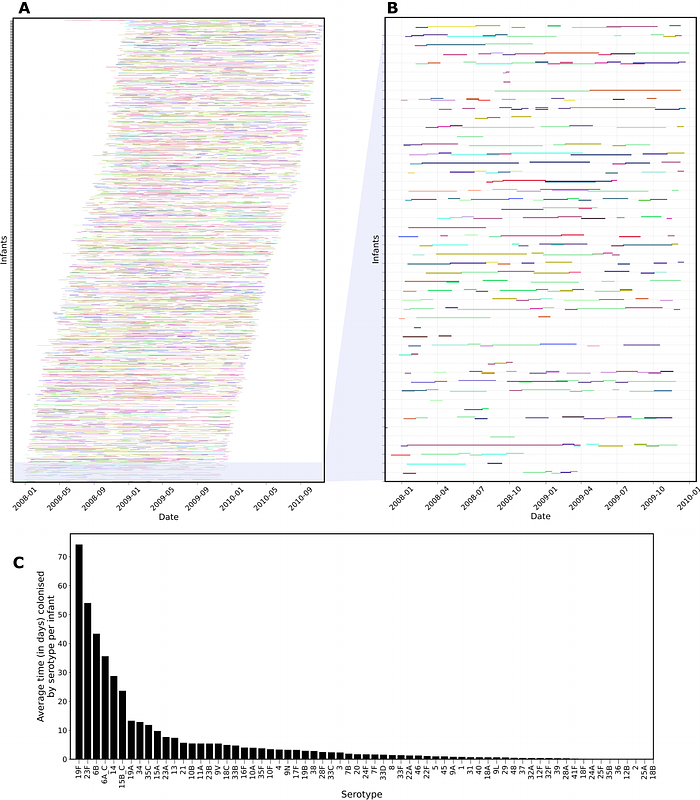Quantifying the effects of antibiotic resistance and within-host competition on strain fitness in Streptococcus pneumoniae

Quantifying the effects of antibiotic resistance and within-host competition on strain fitness in Streptococcus pneumoniae
Krishna, A.; Tonkin-Hill, G.; Morel-Journel, T.; Bentley, S.; Turner, P.; Blanquart, F.; Lehtinen, S.
AbstractCompetition plays a key role in shaping the structure and diversity of bacterial populations. In many clinically important bacterial species, strains compete at multiple scales: at the between-host scale for new hosts to colonise, and at the within-host scale during co-colonisation. Characterising these multiple facets of competition plays an important role in understanding bacterial ecology. This is particularly relevant for antibiotic resistance, where competition between antibiotic-susceptible and resistant strains determines resistance dynamics. In this work, we perform survival analyses on a large longitudinal dataset of Streptococcus pneumoniae carriage to quantify how within-host competition affects the rates of clearance and establishment of pneumococcal strains. We find that the presence of a within-host competitor is associated with a 33% increase in clearance and a 54% reduction in establishment. Priority effects and serotype differences partially predict the outcomes of this within-host competition. Further, we quantify the effects of antibiotic resistance on between- and within-host components of fitness. Antibiotic consumption is associated with increased clearance rate for both susceptible and resistant strains, albeit to a higher extent in susceptible strains. In the absence of antibiotics, we find some evidence that resistance is associated with increased susceptibility to within-host competition, suggesting a fitness cost of resistance. Overall, our work provides quantitative insights into pneumococcal competition across scales and the role of this competition in shaping pneumococcal epidemiology.